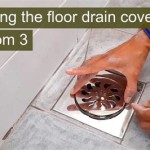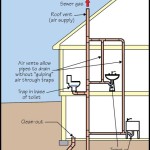How to Change a Bathroom Sink Plug: Essential Aspects
Maintaining a functional bathroom sink is crucial for hygiene and convenience. A well-maintained sink requires attention to details, including the condition of the sink plug. A faulty or damaged plug can lead to water leaks, overflows, or drainage issues. Understanding the essential aspects involved in changing a bathroom sink plug empowers homeowners to address the task effectively, ensuring the efficient operation of their sink.
The phrase "How to Change a Bathroom Sink Plug" serves as a verb, outlining a step-by-step process to be undertaken. This article focuses on the critical aspects of this process, providing a comprehensive guide for successful sink plug replacement.
Essential Aspects of Changing a Bathroom Sink Plug
1. Identifying the Type of Plug: Different sinks utilize various types of plugs, including pop-up plugs, lift-and-turn plugs, and toe-touch plugs. Identifying the correct type of plug and its mechanism is essential to select the appropriate replacement.
2. Gathering Necessary Tools: Changing a sink plug typically requires a few basic tools such as a wrench, pliers, and a screwdriver. Having the right tools on hand before starting the task will ensure a smooth and efficient process.
3. Shutting Off Water Supply: Before attempting to change the plug, it is crucial to turn off the water supply to the sink. This can be done by locating and closing the shut-off valves under the sink or at the main water line.
4. Removing the Old Plug: Depending on the type of plug, specific steps are required for its removal. Pop-up plugs may require unscrewing the cap or using a wrench to loosen the retaining nut. Lift-and-turn plugs may need to be lifted and turned counterclockwise to release them from the drain.
5. Installing the New Plug: After removing the old plug, follow the reverse process to install the new one. Ensure that the new plug is securely fastened and properly aligned to prevent leaks or improper drainage.
6. Testing and Adjusting: Once the new plug is installed, turn on the water supply and test the plug by filling the sink and checking for leaks. Adjust the plug's position or tightness if necessary to ensure proper sealing and smooth operation.
7. Maintenance and Prevention: To maintain the longevity and functionality of the new sink plug, regular cleaning is recommended. Additionally, using a drain strainer can prevent hair and debris from clogging the drain and causing future issues.
Conclusion
Changing a bathroom sink plug is a straightforward task that requires a basic understanding of the essential aspects described in this article. By identifying the type of plug, gathering the necessary tools, shutting off the water supply, removing the old plug, installing the new one, testing and adjusting, and implementing maintenance practices, homeowners can effectively address this task and ensure the continued functionality of their bathroom sink.

How To Replace A Sink Stopper Quick And Simple Home Repair

Quick Tip 26 Pop Up Stopper Sticks Misterfix It Com

Complete Guide Fixing A Sink Stopper Step By Instructions

How To Fix Pop Up Drain Waste Plug

How To Fix A Bathroom Sink Stopper Step By Guide London Post

How To Fix Or Maintain Your Sink S Pop Up Mechanism

Bathroom Sink Popup And Stopper Problems

How To Remove A Sink Stopper The Home Depot
How To Get A Bathroom Sink Plug Removed When It Won T Un Quora

How To Replace A Pop Up Sink Drain Remove The Old Bathroom Stopper Repair
Related Posts







